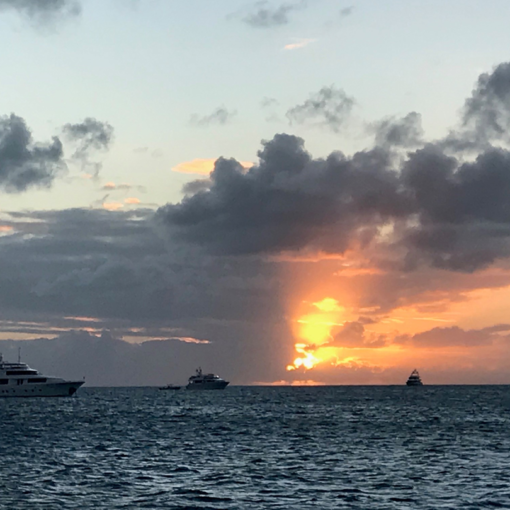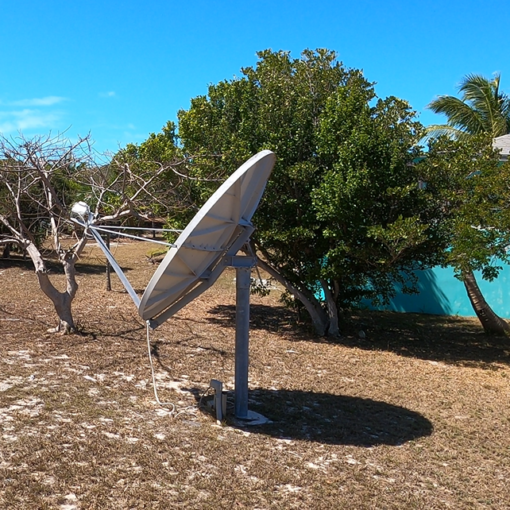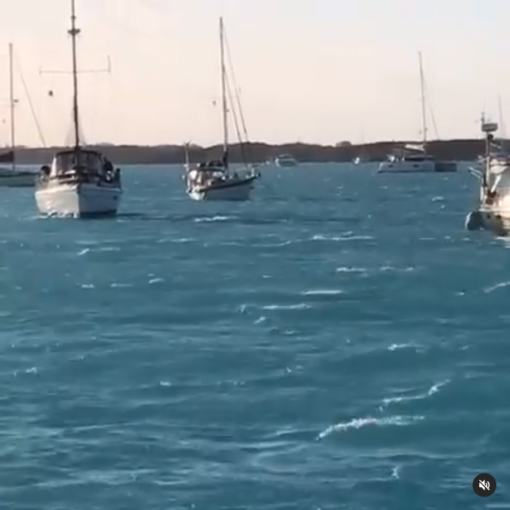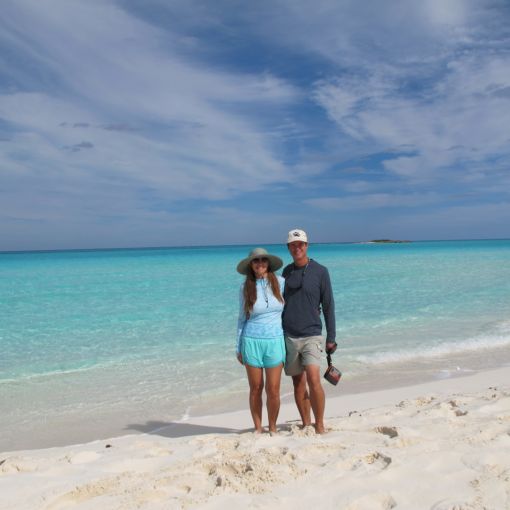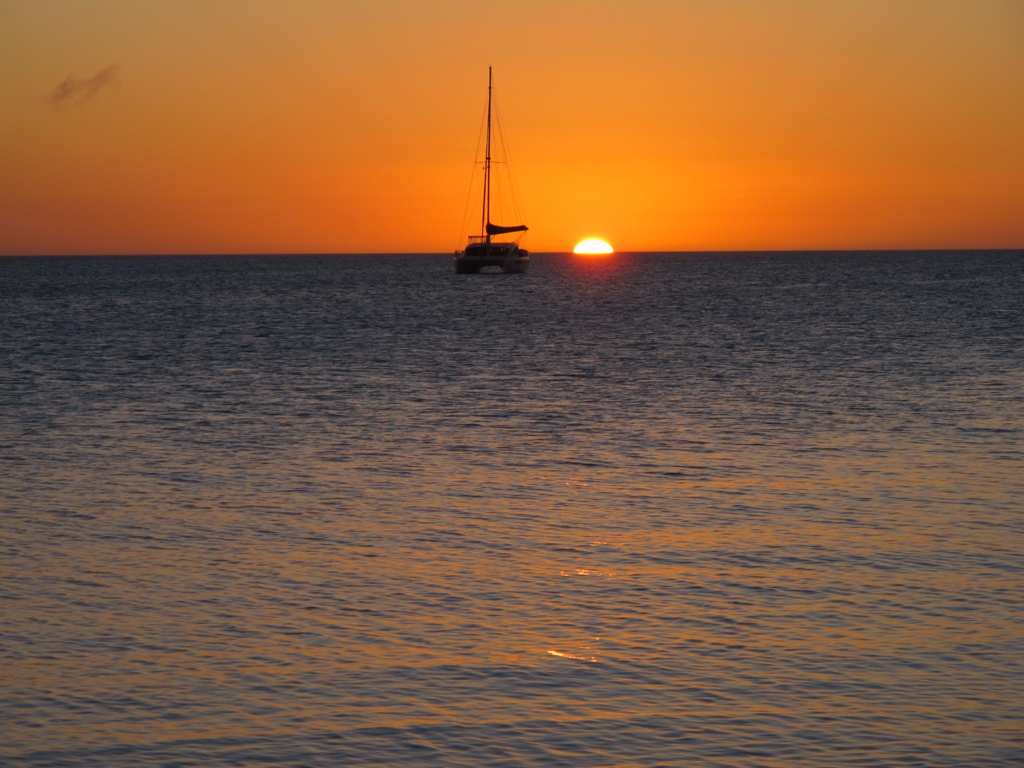
“Great” is an understatement. This cay is huge! As in long! We spent over a week traversing its western shore. Had it not been for a persistent southerly swell, we would have stayed much longer.
Black Point Settlement
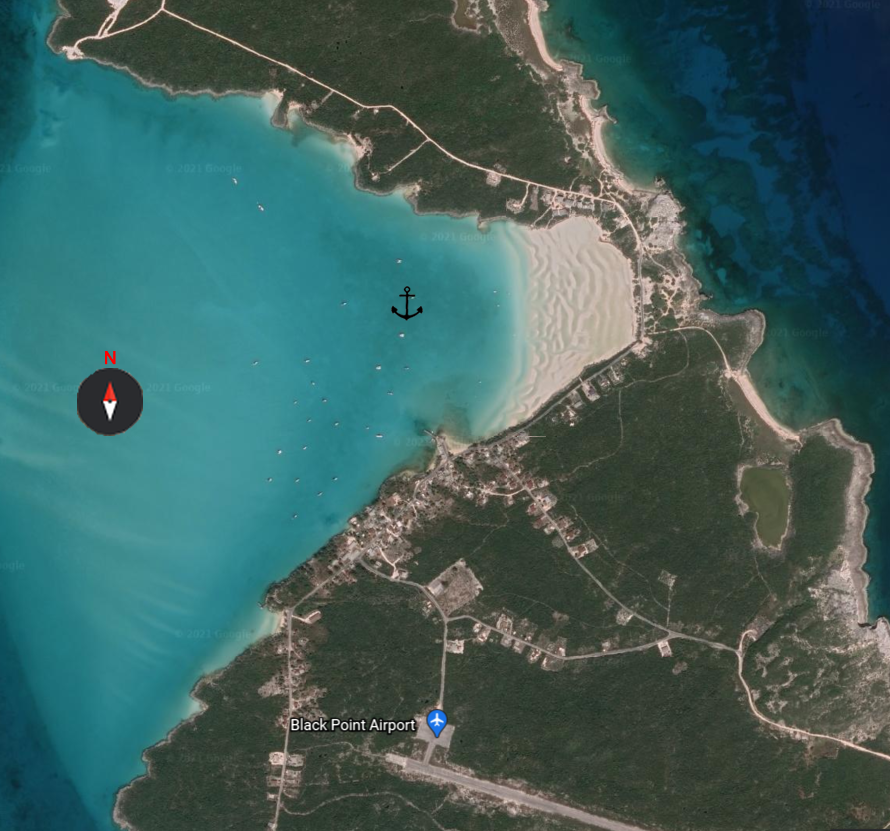
Black Point is the second most populated settlement in the Exumas (behind Georgetown). Though a mere 5 miles south of Staniel Cay, it is a world away in nature. There are no yacht clubs here, no crowded Bay of Pigs anchorage, no mega yachts, nor endless tour boats. Surprisingly though, it does have more bars. Go figure!
The anchorage is nestled within a large west-facing bay, with shallowing sand leading to the beach. When we arrived, everyone was anchored along the southern shore, in front of the town. We instead headed for the beach and went in as far as we could. We were perfectly centered between small-boat mooring fields on either side.
Like all of the settlements we’ve encountered so far, the “town’ consists of a cluster of retail offerings along a single street. The three main places to eat and drink are Lorraine’s Café, Scorpio’s, and Emerald Sunset View. We went to Lorraine’s for lunch, which was great. We had read that buying Lorraine’s mum’s bread (literally, her mother) from the building out back was a must, but we blew it and didn’t get around to that.
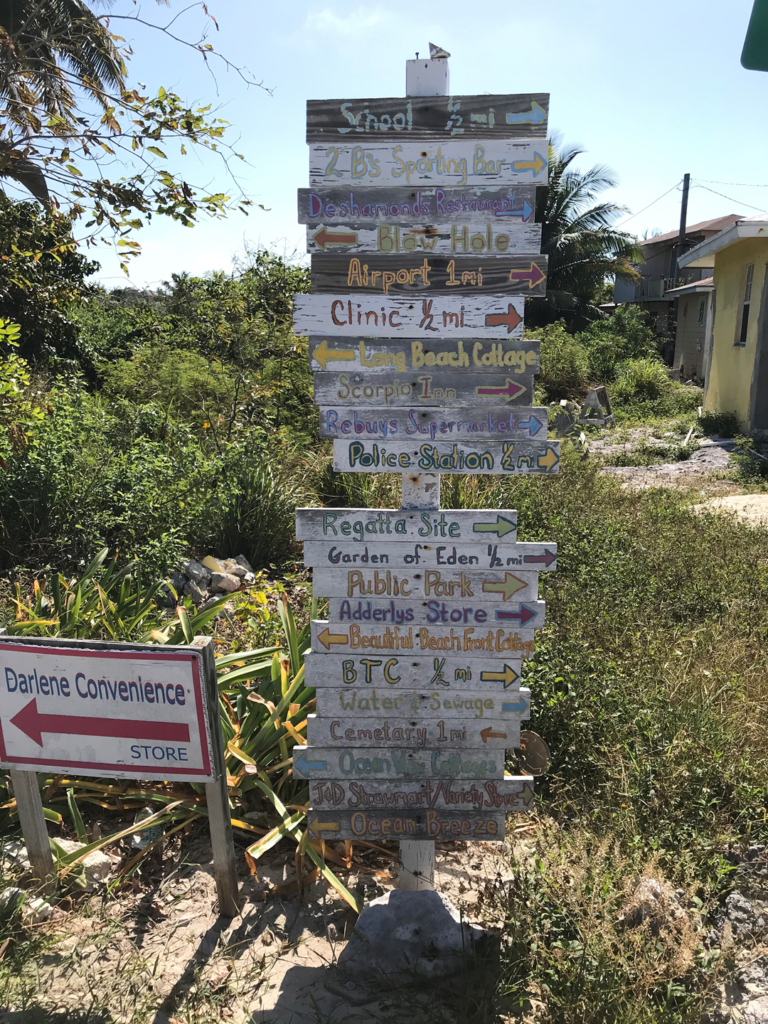
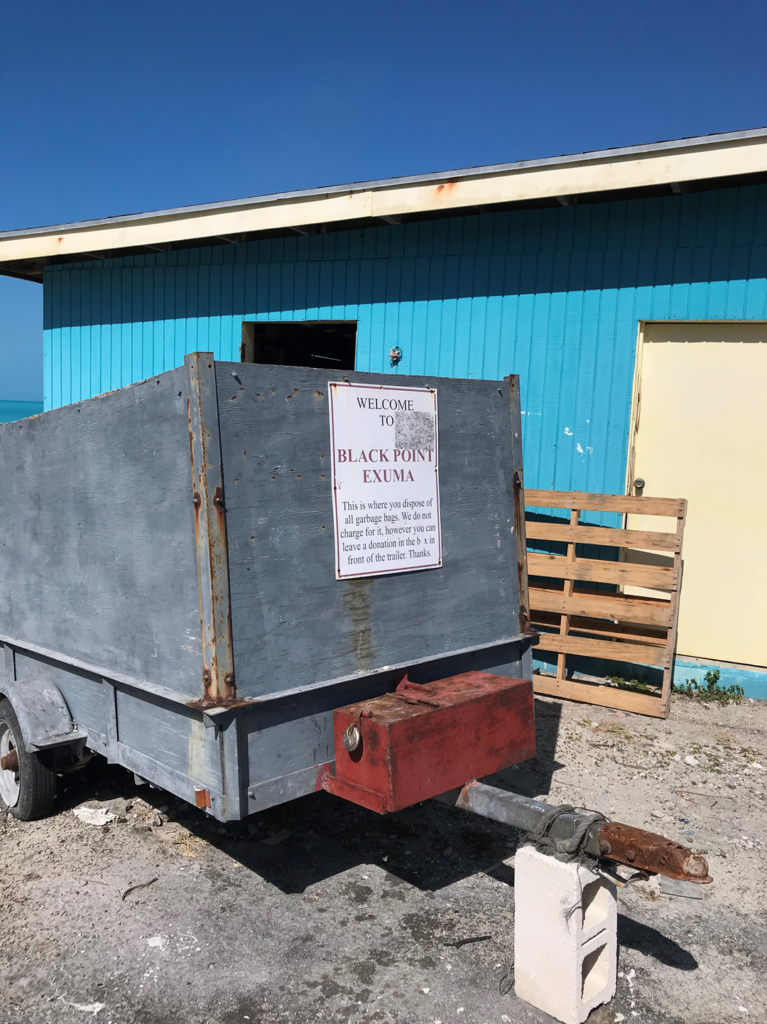
Super Bowl – Island Style
We didn’t just come to Black Point to explore. We had a critical mission – find a way to see the Super Bowl. Still believing Montana is the GOAT and still hurting from last year’s choke against the Chiefs, I wanted both teams to lose. But no way I was going to miss Brady vs Mahomes. Fortunately, Lorraine’s was hosting a Super Bowl event. Well, “event” might be a little strong. Covid had made everything small this year. But she put out a spread of conch fritters and popcorn that paired nicely with the Kalik beer. It was perfect!
Island Entrepreneurs
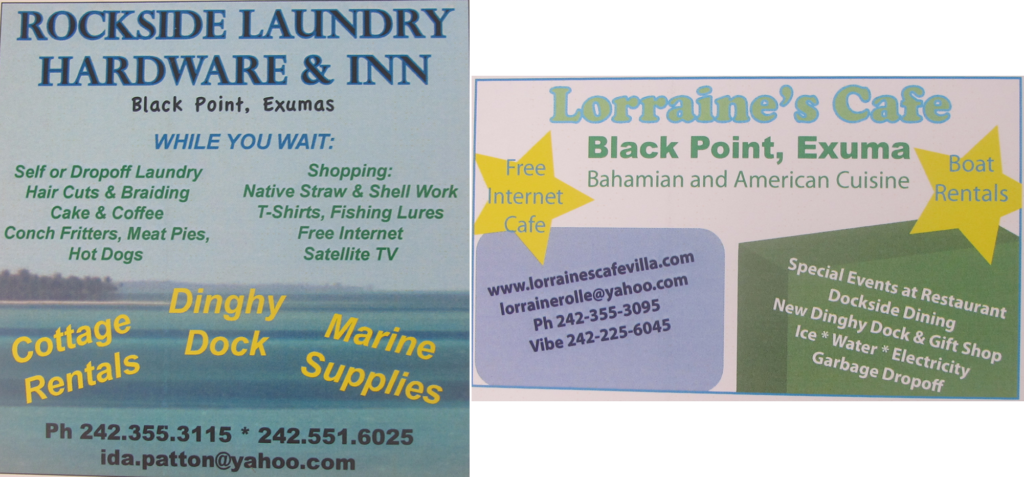
One of the things I first noticed in Bimini and saw repeatedly at each settlement was that the entrepreneurial spirit is alive and well in a uniquely island way. Rockside Laundry, for example, advertises an impressive breadth of services uncharacteristic of a laundry. When have you ever seen a laundry offer cottages and marine supplies?
Little Bay
We’re more the secluded beach types rather than civilization types, so after two nights at Black Point we moved around the corner to Little Bay, which Google refers to as Isaac Bay. This is a spectacular anchorage. Were it not for a growing swell, we would have spent more than two nights here.
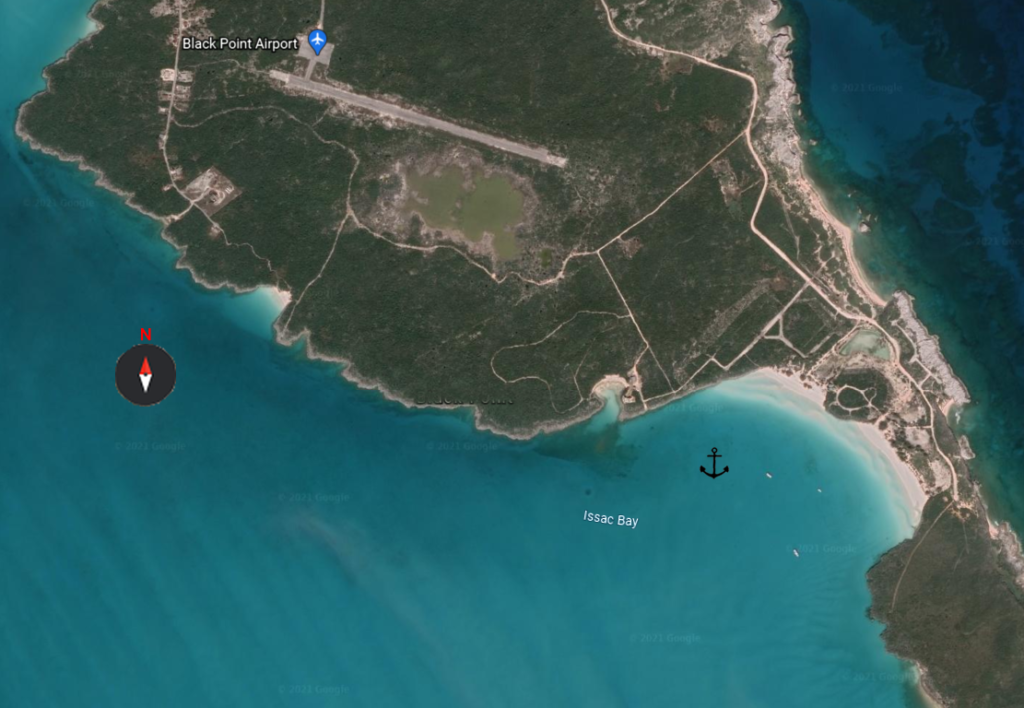
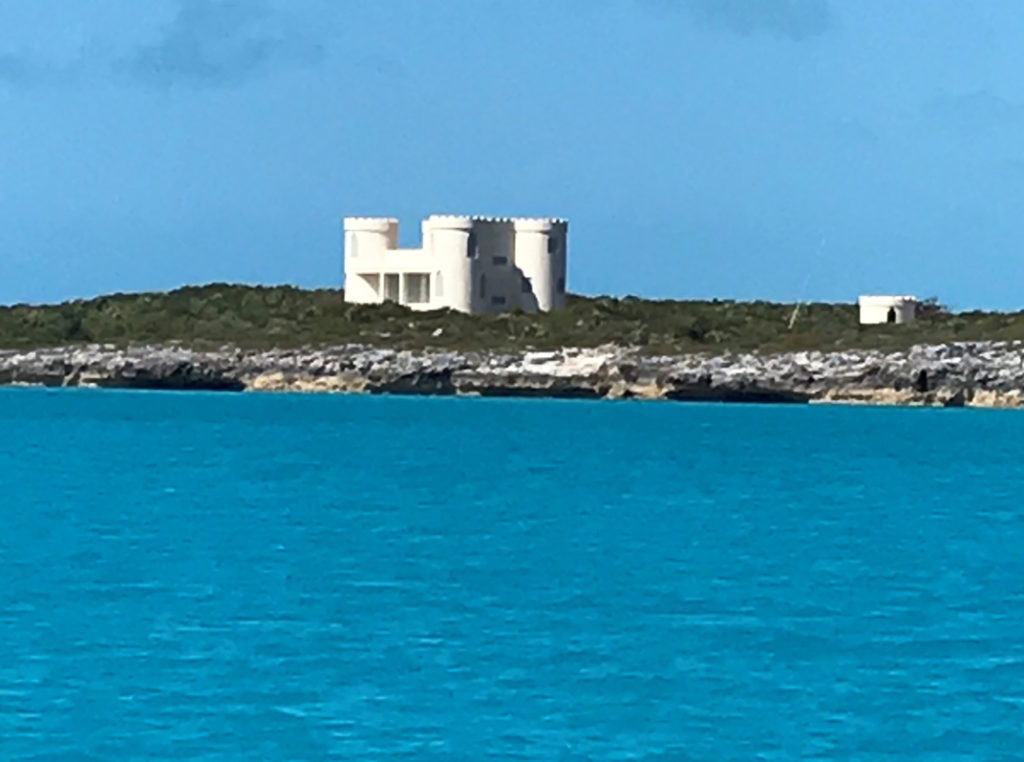
Sand Castle
As you enter, you can’t miss the white castle on the northern shore. We were perplexed. Was this a well-disguised water or power plant? Was this an oddly-placed theme resort? We later learned that this was a private residence. It is owned by Doug and Jean, who are here seasonally. The turrets collect rain water and house solar panels. There is a wind generator as well, along with a large battery bank. A true living-off-the-grid home.
Beach Bonfire
There were four other boats with us and on our first day we were invited to a sundowner and beach fire gathering that evening – invited by none other than our next-door neighbor during the Between the Majors westerly blow. This was another observation we had been making about cruising the Exumas. You tend to cross the same boats on AIS and in anchorages numerous times.
We had spent so much time hiding from cold fronts that this was our first cruiser meet-up since entering the Bahamas. Hopefully the first of many! Such a great group of people.
A Day at the Beach
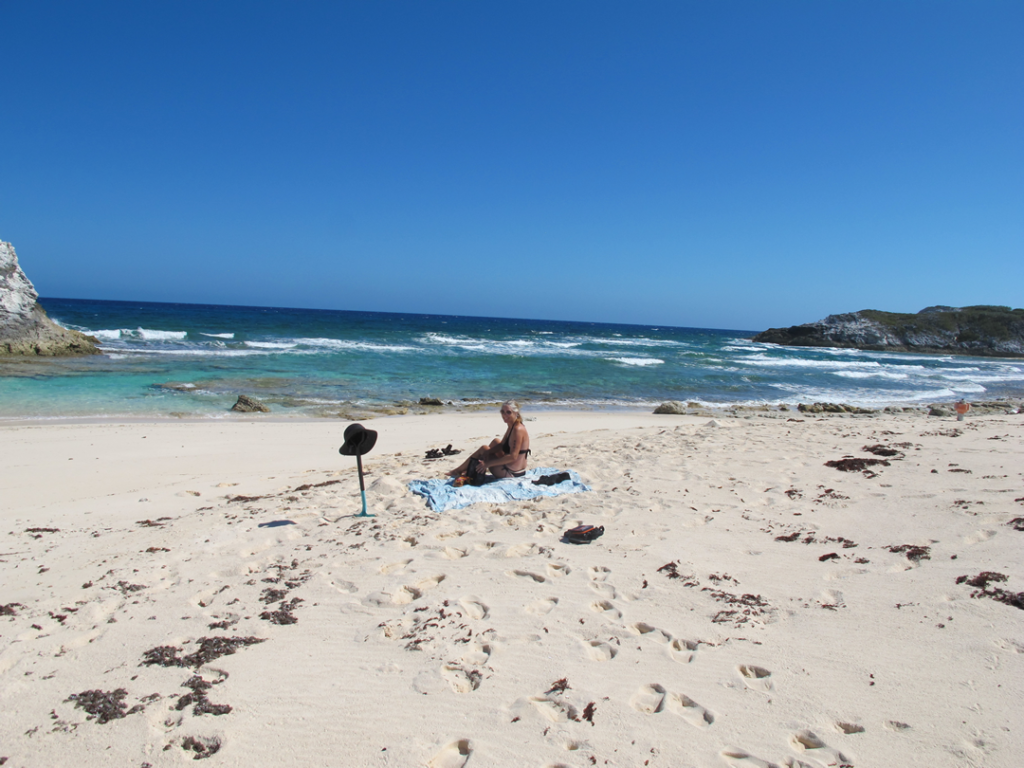
Despite being in the Bahamas for two months, we had yet to just “go to the beach”. I saw on the satellite images that there was a road behind our beach which led to a big beach on the Exuma Sound side. We packed a lunch and headed off.
The Exumas island chain separates the shallow Exuma Bank to the west from the deep Exuma Sound (aka the Atlantic Ocean) to the east. There’s something about the Exuma Sound side that calls to us. The waves, the rocks, and the sounds have a completely different personality from the quiet Exuma Bank.
This was one of our best days yet as cruisers. We spent hours just playing in the water, goofing around, and resting.
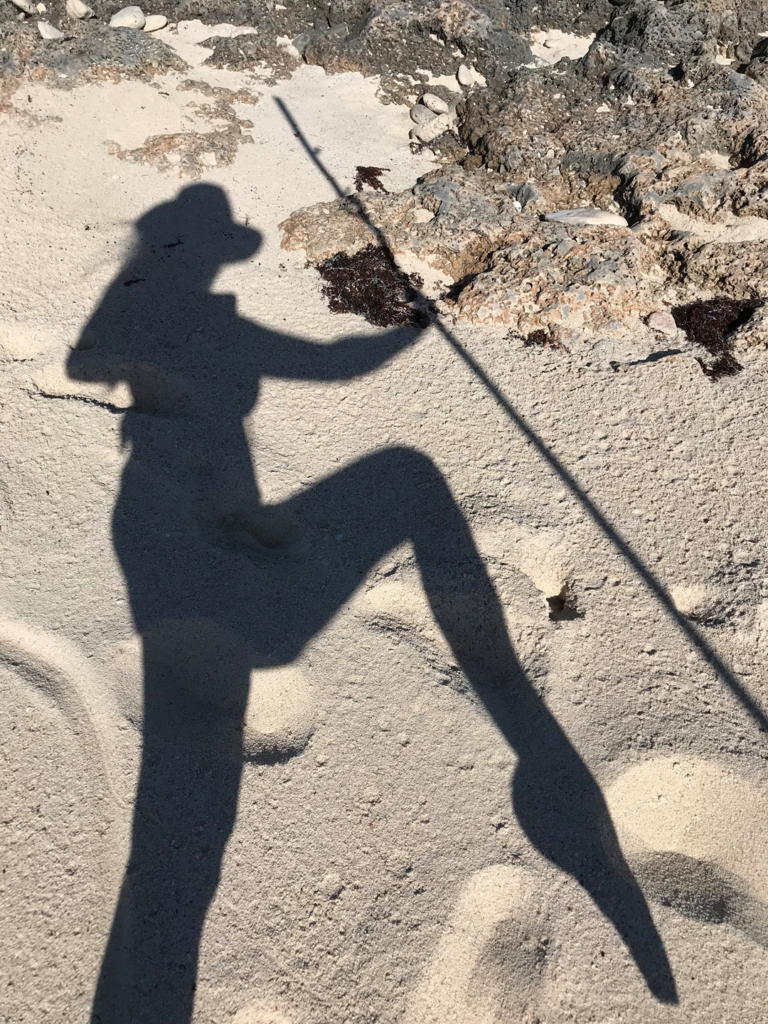
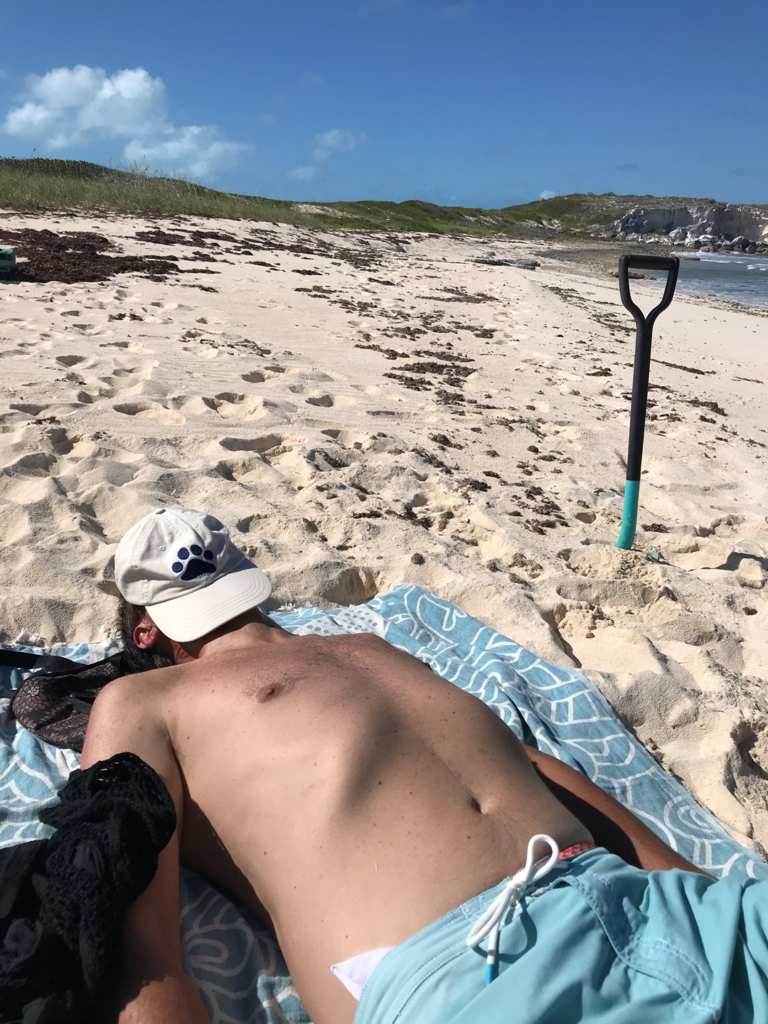
Hetty’s Land
Hetty’s Land was was one of our all-time favorite anchorages. Pure white sand everywhere, with a long shallow approach to the beach. We had it all to ourselves.
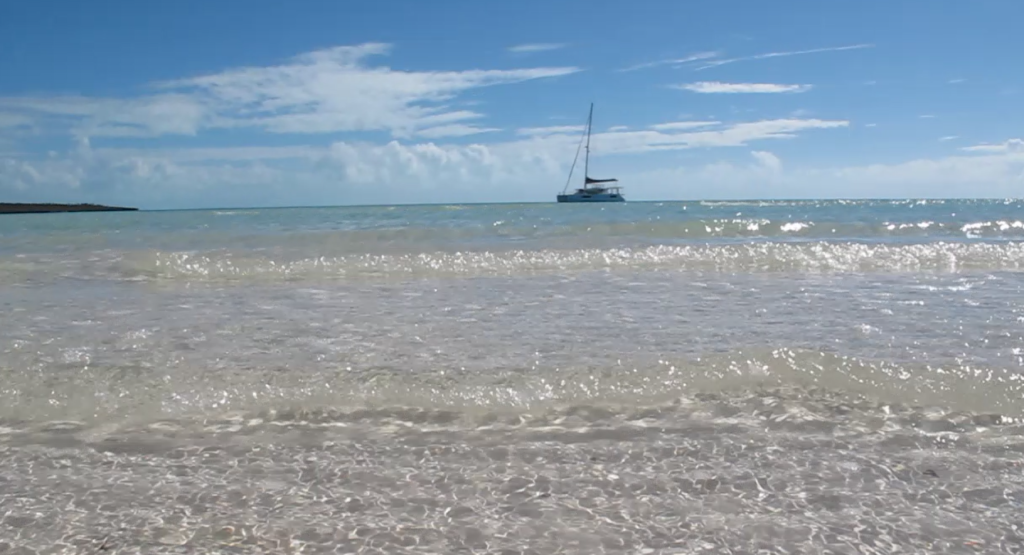
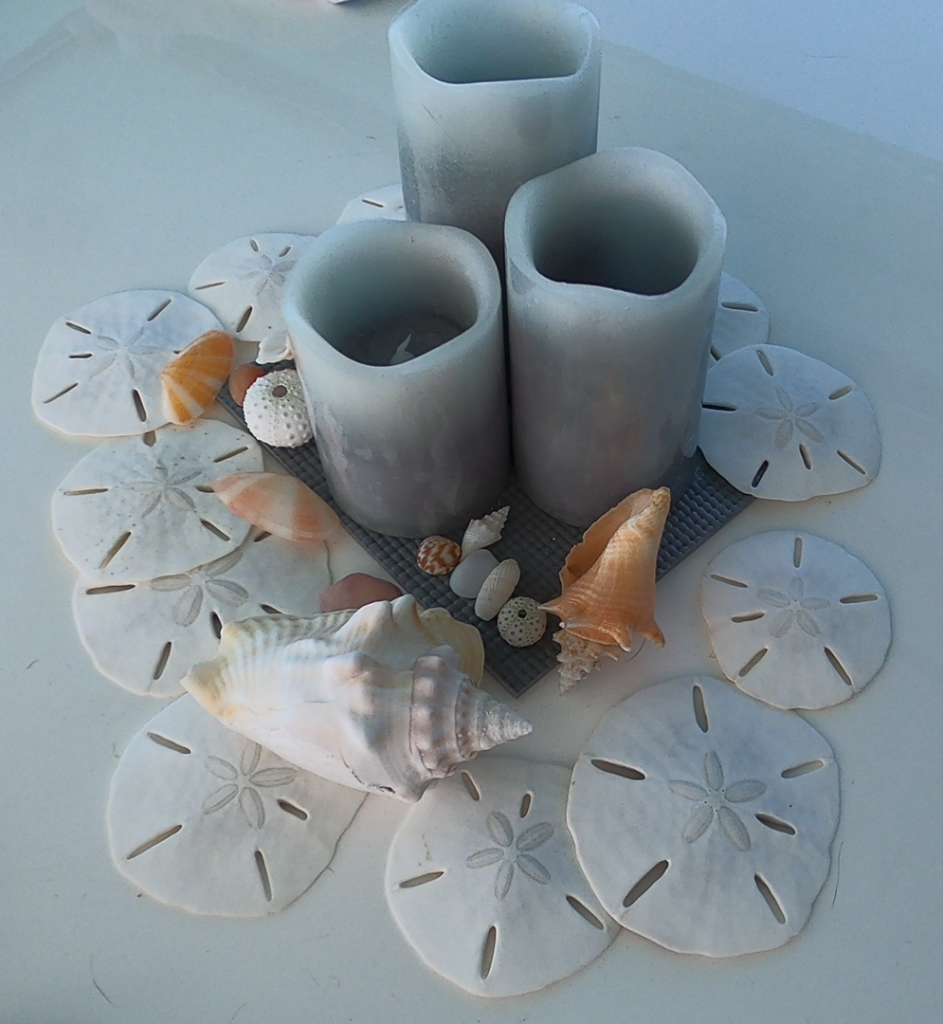
To Brenda, you can just call it sand dollar heaven! She must have roamed the sandbar for hours looking for dead shells among the dozens of live ones. We had always wondered what these flat burrowing sea urchins looked like when they were alive. They were brown, covered with an exterior similar to a starfish, but with much finer cilia.
We had caught the bonfire bug from Little Bay and decided to have our own private bonfire. We made Pina Coladas, setup our blanket and chairs, and had a magical evening watching the sun set behind White Point, the beach’s northern headland.
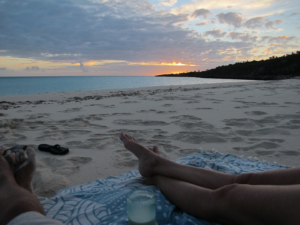
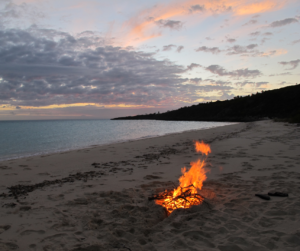
Unfortunately for us, a troublesome southern swell had set in along this southeasterly coastline. With a steady 15-20 knot wind coming from the east and southeast, the swell was hitting us on the beam and creating unpleasant rocking. We were forced to leave after only one night.
Jack’s Bay Cove
We tried escaping the swell by going north to the other side of White Point. The two monohulls that shared Little Bay with us had spent some time there, so this seemed like a good plan. We didn’t get a chance to find out. We tried four of five times to set the anchor, moving around to different locations. But every time we went to back down, the anchor skipped violently, letting us know it was a bed of rock under a thin layer of sand. It even chipped our Rocna anchor!
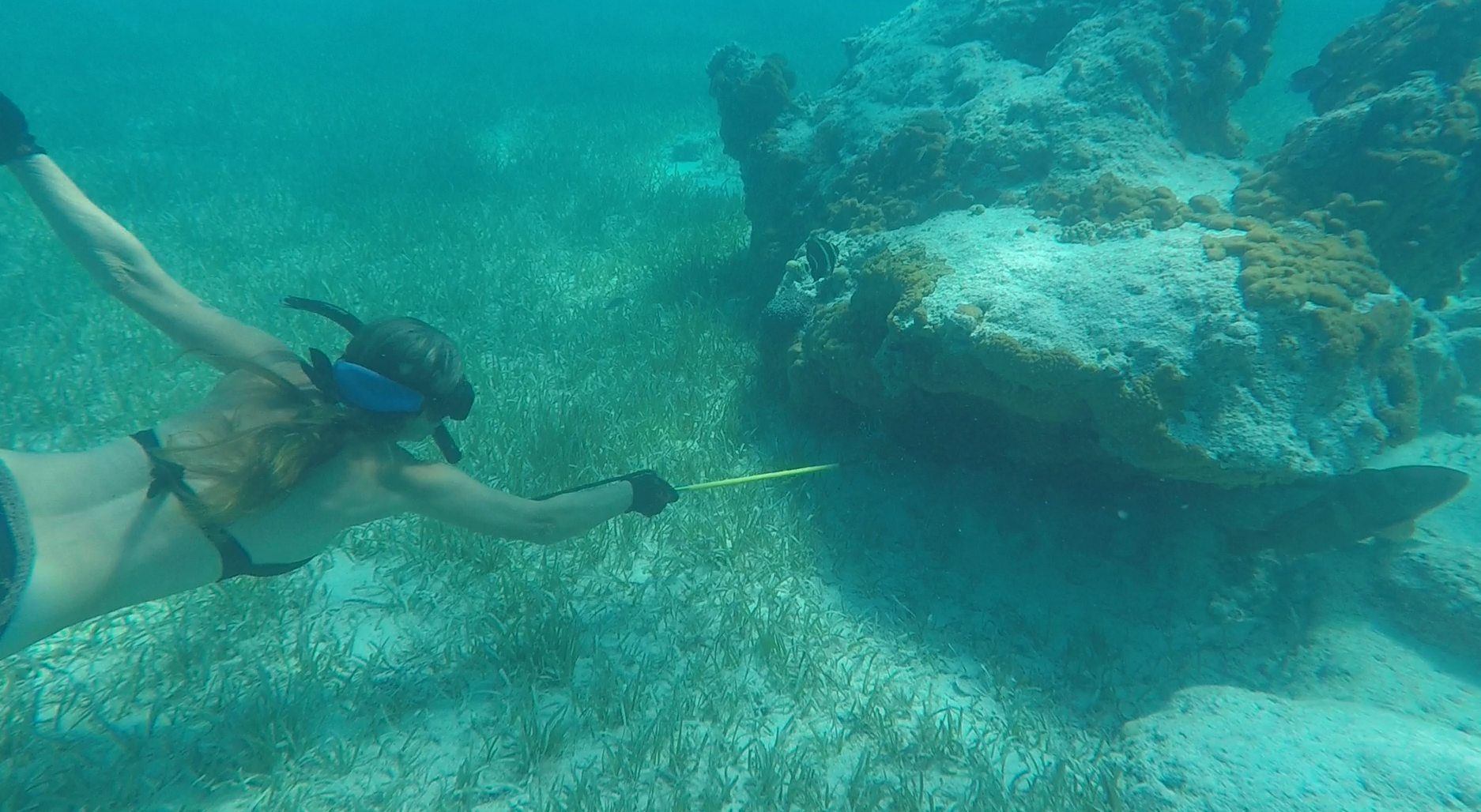
A short distance north of that is Jack’s Bay Cove, which is a little half-circle beach in an otherwise straight coastline. We anchored out next to a cluster of coral heads. They would define our stay here.
We found two large coral heads, plus a few small ones, in about 12 of water. They had a nice collection sea life, including a lobster that unfortunately was too small to catch. In the middle of it all were at least two dozen lionfish, crowded together in different sections.
Lionfish are native to the Indo-Pacific. They first appeared off southeastern Florida in the late 1980s and have since invaded the entire Caribbean and western Atlantic. No known natural predators, a voracious appetite, and an ability to produce 2 million eggs per year have made them a critical threat to the region. We’ve witnessed the impact over our years of scuba diving the Caribbean.
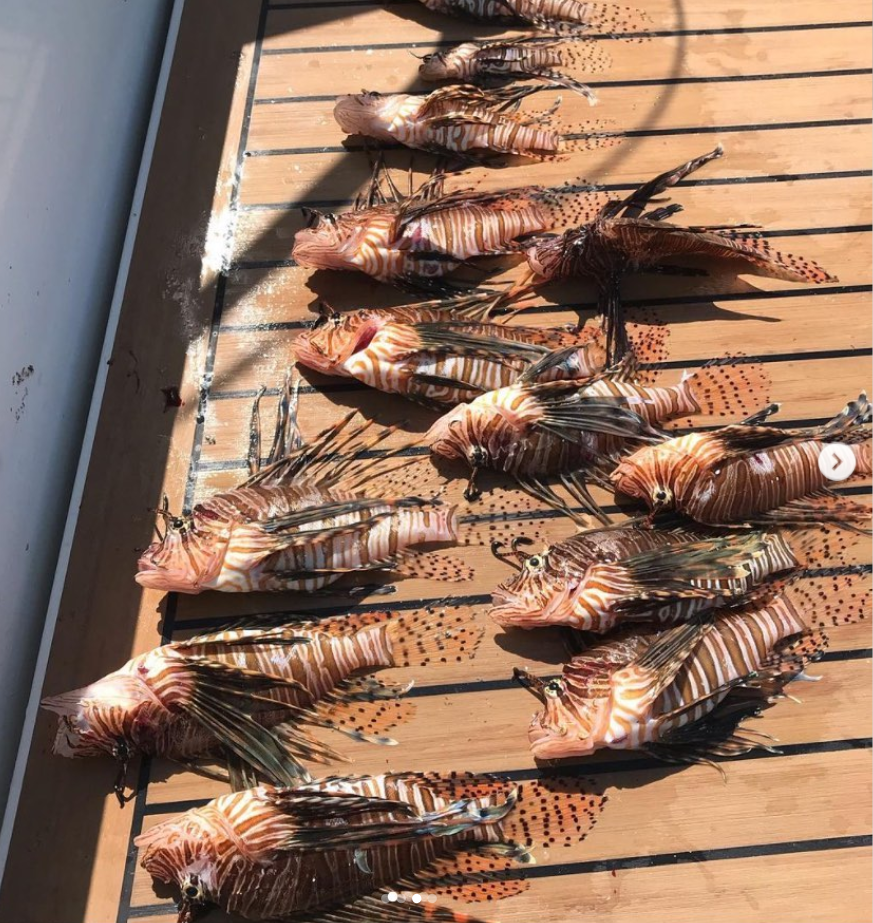
While I was working on a few boat things, Brenda went off to explore. Then suddenly I hear “lionfish, lionfish!” I see her swimming back to the boat, holding a lionfish aloft on our pole spear. She was so excited!
We headed back out with the dinghy and a bucket, taking turns with the pole spear. Brenda didn’t want to stop until we were exhausted. Which was a long time. We ended up with 14!
As exhausting, but less fun, was cleaning them. This apparently was my job.
Lionfish are covered with long venomous spines. You can’t just pick them up. I used kitchen tongs to pick them out of the bucket, paired with scissors to cut off all of their spines at the base. Once completed, they can be handled like any other fish. I chose to filet them, which is a tedious process given their small size.
Lionfish have white meat that tastes great. I simply sautéed them in butter and garlic, but all of the usual options are applicable.
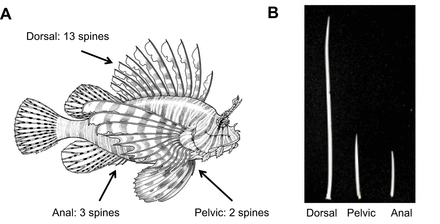
Bay Rush Bay
The troublesome swell once again pushed us to move along and we continued south. Before leaving Great Guana we wanted to see the cave at Oven Rock and the charted coral off the Bay Rush Bay anchorage. We rationalized that it might be protected because it was sort-of in the lee of Little Farmers Cay, but as rationalizations go it wasn’t a very good one. But this is a pretty spot, with Oven Rock, its beach, and Little Farmers Cay in view.
The corals referenced in the charts are actually a large area of shallow limestone, a few rocks, and tiny pieces of coral here and there. However, it’s not entirely a waste of time because this leads to Isaac Bay and its enormous white sand beach.
Oven Rock
A brief hike off the beach at Oven Rock is a large cave. Some reviews I’ve seen online suggest it’s only a few feet off the beach, but it’s actually quite a distance and over half way to the Exuma Sound side of the island.
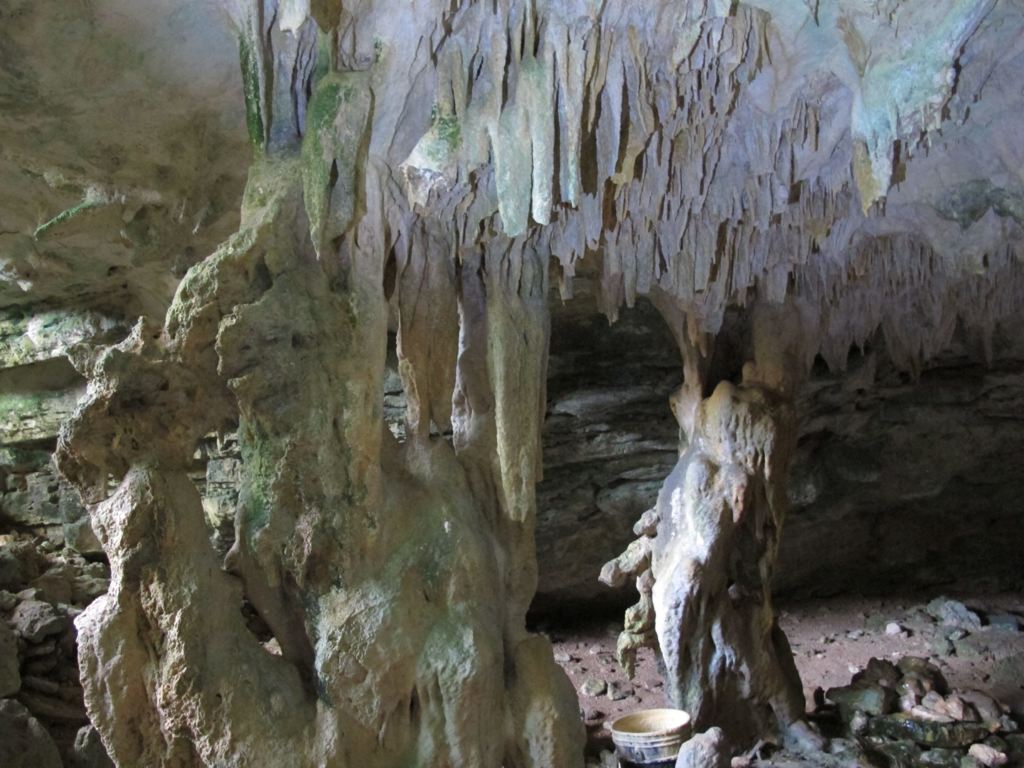
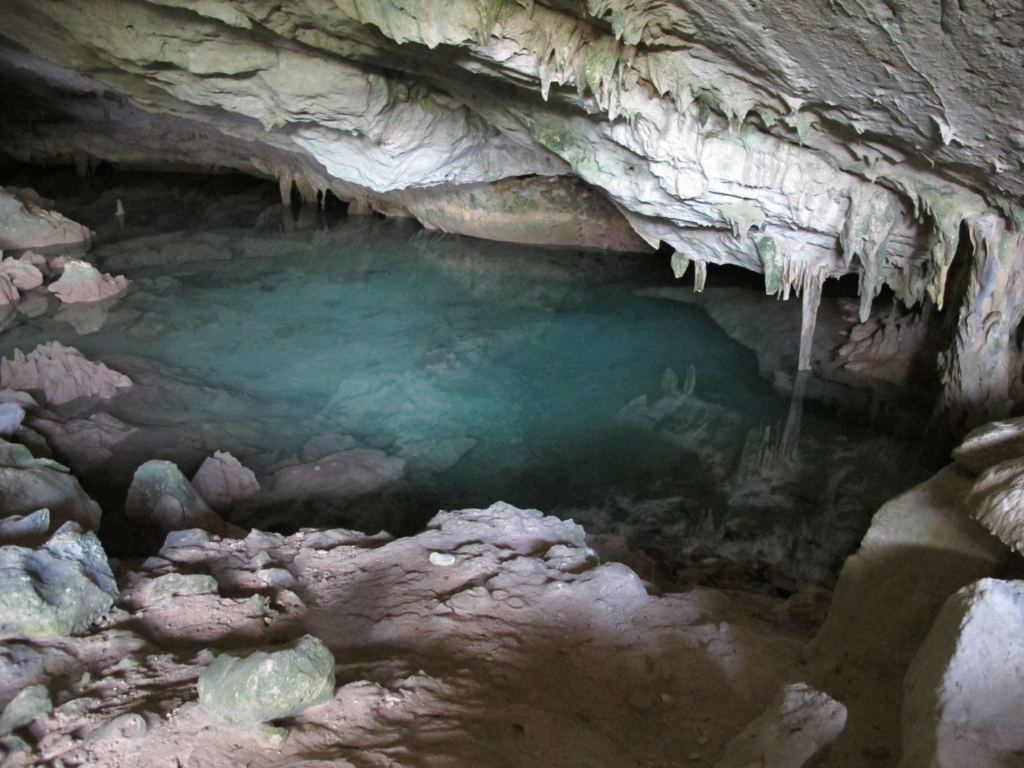
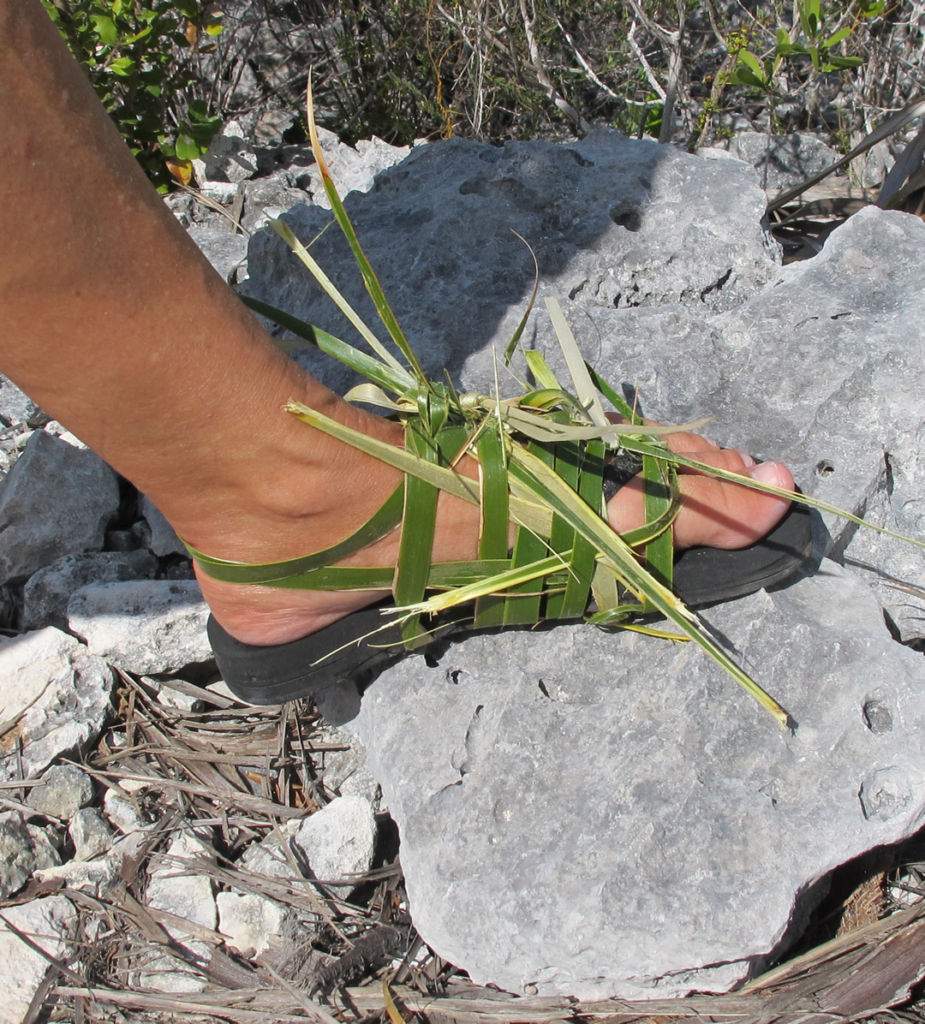
The cave is covered with stalactites and stalagmites. Particularly interesting is that you can see the mineral-rich water dripping from the ceiling and the growth continuing. It contains two large clear pools of water. They appeared to be only a few feet deep from where we stood, but some online information suggests you could possibly dive them.
On the return hike, Brenda broke her second pair of sandals since arriving in the Bahamas. With the thorns and sharp rocks throughout the trail, there was no way she could go barefoot. But she’s a resourceful soul and solved the problem!
